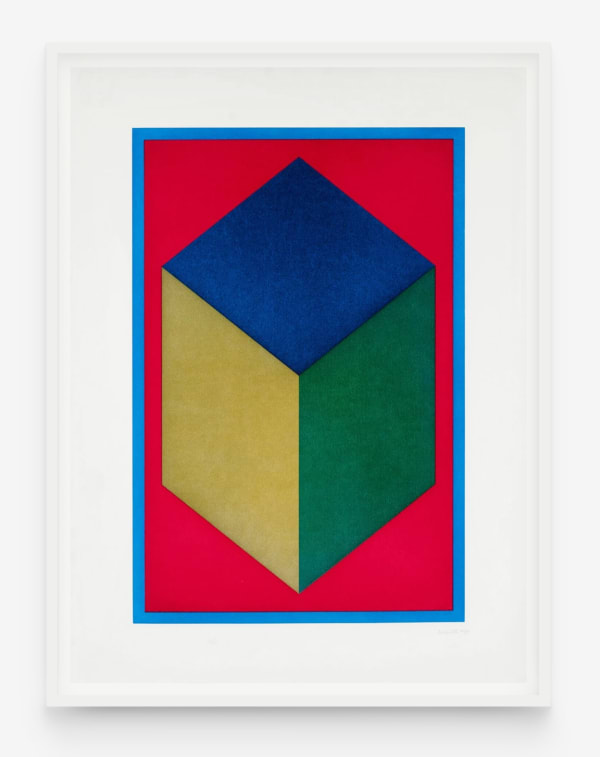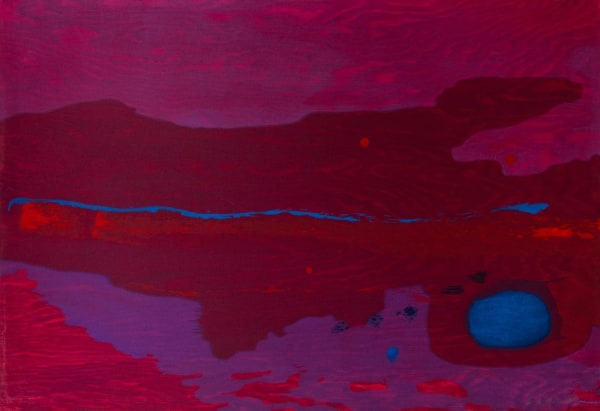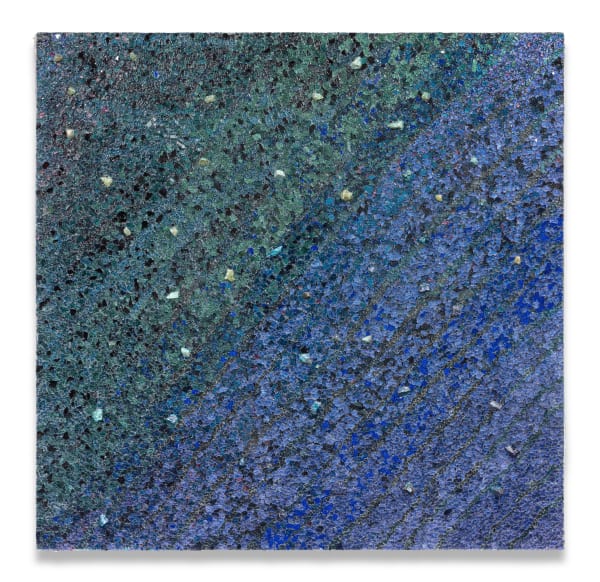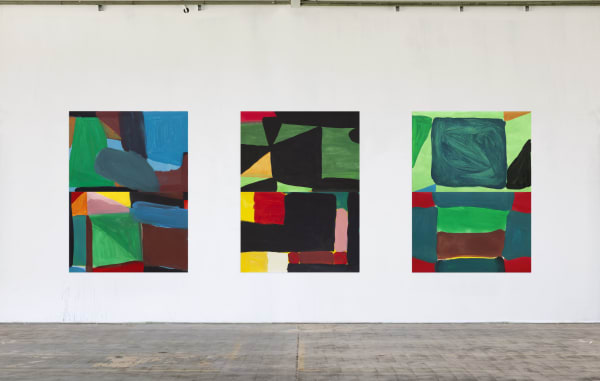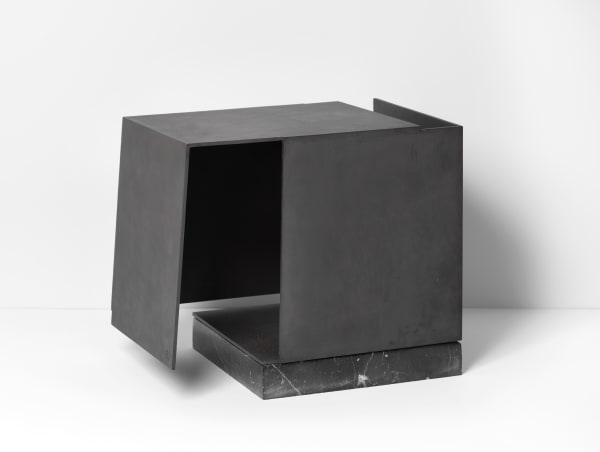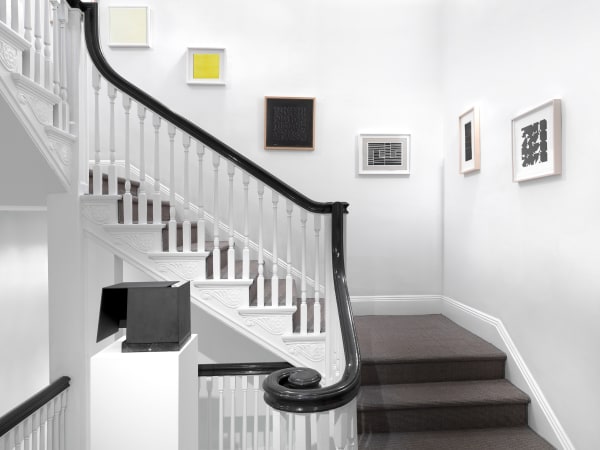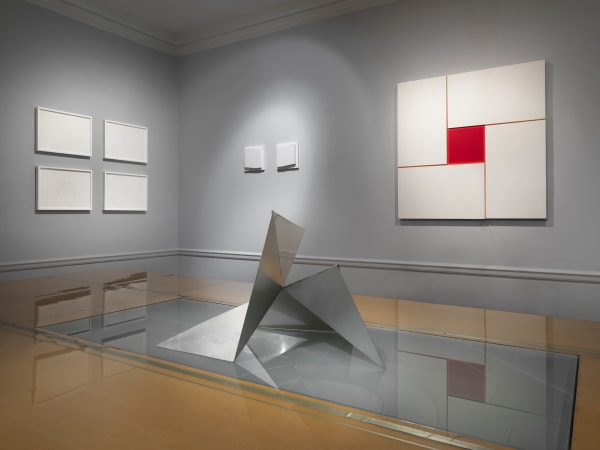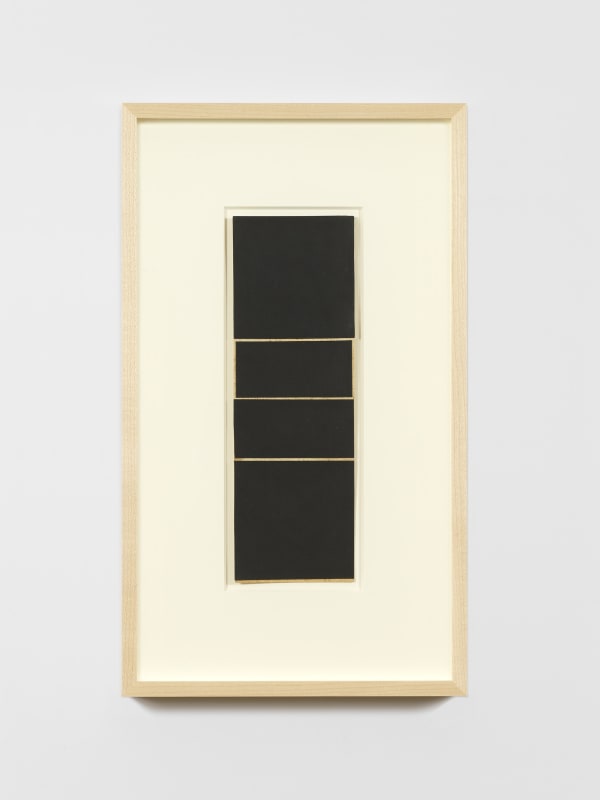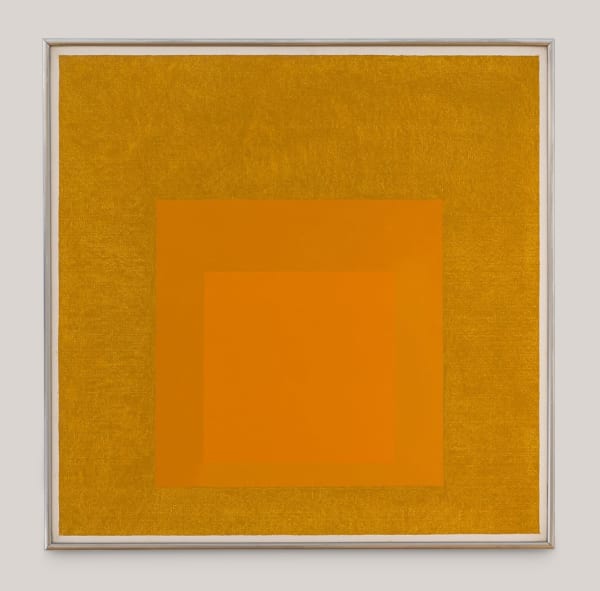“The narrative of serial artworks is more like music than like literature.”
Sol LeWitt (Hartford, CT, 1928 – New York, NY, 2007) was an American artist recognized as a founder of both Minimal and Conceptual art. LeWitt completed his BFA at Syracuse University in the 1940s. During the mid-1960s, he worked as a night receptionist at the Museum of Modern Art, where he met and befriended future art critic Lucy Lippard and fellow artists Dan Flavin, Robert Mangold, and Robert Ryman. At that time, LeWitt also started attempting three-dimensional works based on cubes. For these works, he used mathematical approaches and systematically developed variations on his own creations. His body of work concentrates more on the idea behind the art rather than conventional aesthetics, yet is still rich in complexity. Starting with Wall Drawing 1: Drawing Series II 14 (A & B) installed at Paula Cooper Gallery in 1968, LeWitt produced large-scale drawings based on rigorous arrays of designs, shapes, colors, and grids rendered in pencil and paint in conjunction with instructions and diagrams, which needed to be followed in installing the work. LeWitt's works and his innovative methodology of executing art had a profound influence on both his peers and younger artists including Frank Stella and Eva Hesse.
-

Gesture and Form
Selected Drawings from the 20th and 21st Century 24 Apr - 30 Jun 2025Gesture and Form: Selected Drawings from the 20th and 21st Century explores the act of mark-making as a means of expression, innovation, and experimentation. Drawing has long served as a...Read more -

Painting Abstraction
197X - Today 25 Jan - 31 Mar 2021This online viewing room showcases a selection of works by innovative historical and contemporary artists who have returned to and reinvented abstraction in order to speak to the present and...Read more -

Minimal Means
Concrete Inventions in the US, Brazil and Spain 24 Jan - 16 Mar 2019Curated by Joan Robledo-Palop, Minimal Means is a conversation about space and the way people occupy and imagine that space in three parts of the world. The exhibit focuses on...Read more
-

Patterns in Motion
The Cross-Cultural Resonance of Sol LeWitt and Emily Kame Kngwarreye March 20, 2025In contemporary art, few dialogues are as compelling as the unspoken exchange between American conceptual artist Sol LeWitt and Australian Aboriginal painter Emily Kame Kngwarreye....Read more -
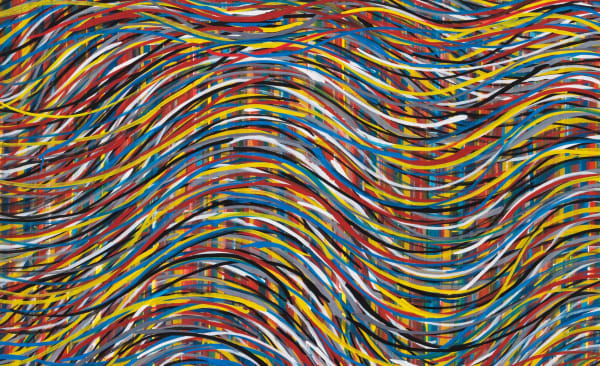
The Art of Sol LeWitt
A Conversation with David S. Areford May 2, 2024A leading scholar on the work of Sol LeWitt (1928-2007), art historian David S. Areford has delved into the artist's extensive body of work through...Read more -
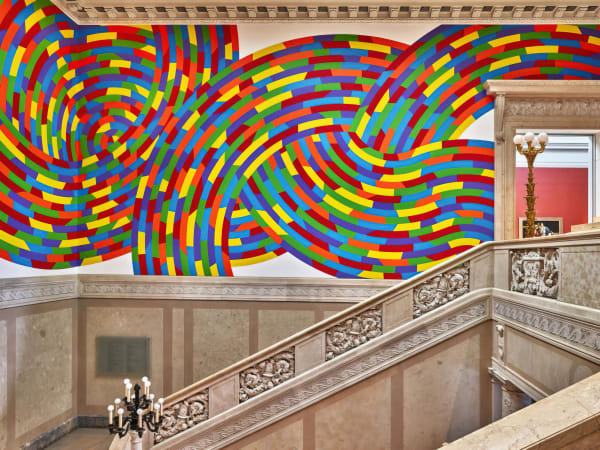
On Sol LeWitt
Perspectives December 4, 2020In this episode of PERSPECTIVES , art historian Samuel Shapiro sits down with Janet Passehl and Cristina Guadalupe Galván to discuss LeWitt’s early work and...Read more
-

A Voyage Through Drawing at Salon du Dessin in Paris
Anna Mikaela Ekstrand, Cultbytes, March 23, 2024 -

Les anciens font la loi au Salon du Dessin
Jean-Marie Wynants, Le Soir, March 22, 2024 -

Le Salon du dessin reste à la page
MARIE POTARD, Le Journal des Arts, March 13, 2024 -

Salon du Dessin Returns to the City of Light for 32nd Edition
The fair anchors Paris's beloved Drawing Week this monthArtnet News, March 13, 2024 -

What We Call Art - Zeit's Painting Abstraction: 197X-Today
Phillip Barcio, Widewalls Magazine, March 11, 2021 -

Painting Abstraction: 197X—Today
Meer, February 16, 2021 -

LA ÚLTIMA REVISIÓN DEL ARTE ABSTRACTO
Ana Robledano, Ars Magazine, February 12, 2021 -

Minimal Means: Concrete Inventions in the US, Brazil and Spain. Curated by Joan Robledo-Palop
JONATHAN GOODMAN, Arte Fuse, March 8, 2019 -

Nina Blumberg interviews Joan Robledo-Palop
Nina Blumberg, Cultbytes, February 19, 2019 -

Abstracciones sin fronteras
Descubrir el Arte, February 18, 2019 -

Artists Bianca Boragi and Julia Rooney to lead talk on Minimal Means exhibition
ArtFixDaily, February 13, 2019 -

Minimal Means: Concrete Inventions in the US, Brazil and Spain
José Juan Barba, Metalocus, February 8, 2019 -

Minimal Means
Meer, January 28, 2019 -

El minimalismo de EE.UU. se fusiona con España y Brasil en Nueva York
Helen Cook, El Obrero, January 25, 2019 -

Minimalismo de EUA, Brasil e Espanha se fundem em Nova York
Helen Cook, EFE, O Estadão, January 25, 2019 -

El minimalismo de EE.UU. se fusiona con España y Brasil en Nueva York
Helen Cook, La Vanguardia, January 24, 2019 -

Zeit Contemporary Art opens the exhibition 'Minimal Means: Concrete Inventions in the US, Brazil and Spain'
Artdaily, January 24, 2019 -

Minimalismo de EUA, Brasil e Espanha se fundem em Nova York
Helen Cook, UOL, Brazil, January 24, 2019 -

Obras del minimalismo por primera vez reunidas en Nueva York
El Universal, Mexico, January 24, 2019 -

El minimalismo internacional en Zeit
Ana Robledano, Ars Magazine, January 22, 2019 -

A Group Show at Zeit Contemporary Art Introduces a Dialogue on Minimal Means
Elena Martinique, Widewalls Magazine, January 22, 2019




